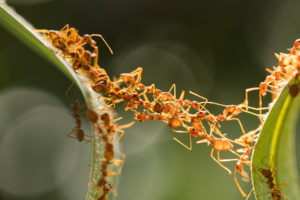
“Everyone wants coordination, but nobody wants to be coordinated.”
These words from Nora Berrahmouni, Senior Forestry Officer for the Food and Agriculture Organization of the UN, at the start of a session on coordination and advocacy at the recent AFR100 Annual Partners Meeting (APM), artfully pose the challenge at the heart of the proliferation of sustainable development and restoration initiatives in Africa.
Opportunities and challenges grow as initiatives proliferate
In 2014, the LPFN convened representatives from civil society, the private sector, and national and subnational governments from more than two dozen African Countries, along with supporters from international NGOs, multilateral agencies, and European governments, to discuss challenges and opportunities to create, preserve, strengthen and support sustainable landscapes, through landscape-level, locally-led multi-stakeholder partnerships.
They used those deliberations as an opportunity for priority-setting, and created a collectively-endorsed agenda based on those priorities. The action agenda is called the African Landscapes Action Plan, or ALAP. They pledged their organizations to advance specific action items within the agenda, and to help advance ALAP as a whole where possible. The African Union endorsed ALAP as a pillar of its African Resilient Landscapes Initiative. Then, in 2015, the Sustainable Development Goals were agreed at the UN General Assembly in September and the African Forest Landscape Restoration Initiative, AFR100, was announced at the Global Landscapes Forum in Paris in December.
The large number of regional landscape programs and initiatives active in Africa (ALAP andAFR100, but also Great Green Wall, TerrAfrica Partnership, IUCN’s SUSTAIN-Africa, et al.) has led to concern over potential redundancies, competition for resources, and “reinventing the wheel.” To capitalize on strengths and promote synergies across the different initiatives, greater emphasis must be placed on knowledge-sharing, coordinated monitoring, and more shared capacity-development opportunities. I should note that NEPAD is working admirably with limited resources to support coordination, but cannot force initiative leaders/funders to build shared systems, and is not resourced to build these themselves.
Joining forces for long-term sustainability in Africa
In 2017, the LPFN reconvened the partner organizations of the original ALAP and other champions of integrated landscape management in Africa, in Addis Ababa at a learning event called the African Landscapes Dialogue. As part of the agenda, organizations reported on and discussed progress on the action items, and refreshed the agenda. These leaders added the seventh action area on coordination.
They noted that knowledge-sharing, at the national, sub-national and landscape levels, between those engaged in these various initiatives will be critical, to avoid perceived competition for the limited resources available to them.
Specifically, knowledge systems for landscape-level restoration planning must be designed so they can be made available to and useful for multi-stakeholder landscape management partnerships with ambitions including but also beyond restoring degraded land. They can support informed planning and decision-making about locating protected areas, improving agricultural operations, and increasing water availability for urban or agricultural uses, for example, that reduce land degradation and pressure on natural resources generally.
Low-cost next steps towards coordination
In response to Nora Berrahmouni’s challenge at the AFR100 APM, I suggested some next steps for coordination between AFR100, ALAP and other regional initiatives:
- Organize the 2019 partners meeting and 2019 ALAP dialogue jointly between our various secretariats, pooling funding and focusing specifically on a facilitated agenda to achieve tangible coordination outcomes, such as increased capacity for holistic implementation among landscape leaders, joint projects to test co-implementation of various initiative objectives, and plans for shared knowledge systems.
- Undertake network mapping of Africa’s landscape programs and implementers, ideally with ownership/leadership from NEPAD. Such a map would allow project and program designers, policymakers, investors, and donors to identify quickly and easily available implementation partners: those already convening stakeholders for collaborative management, in the area of interest.
- Establish a coordination committee, with thematic working groups, between the focal points and secretariats of the many various sustainability and restoration initiatives in Africa, with a goal of increasing transparency and reducing duplication of effort.
These modest ideas can get us closer to alignment as we work to design and implement the projects and policy and financing changes needed to achieve the big ambitions at the center of each regional initiative. Meanwhile, of course, developing a longer-term vision for collaborative knowledge systems for sustainable landscape management in Africa remains vital, and the LPFN and its members will have a key role to play.

